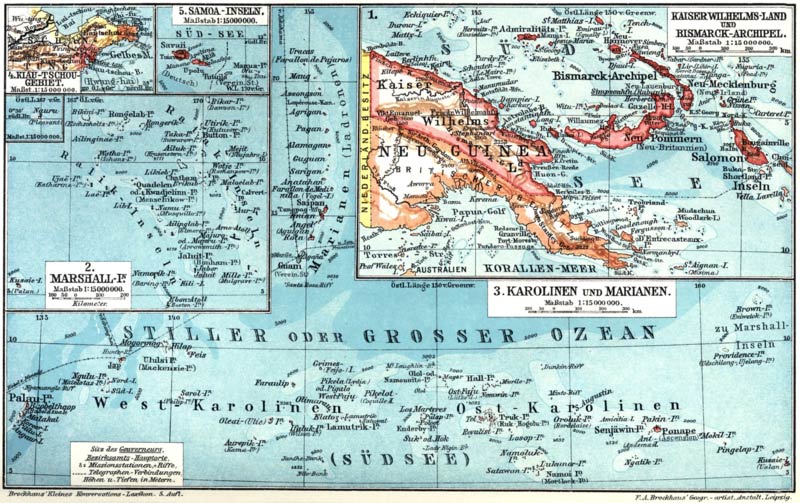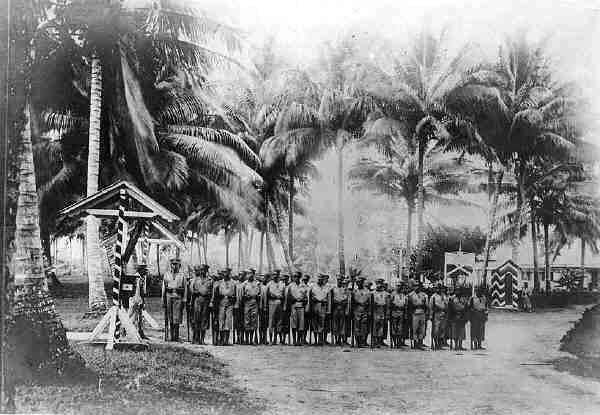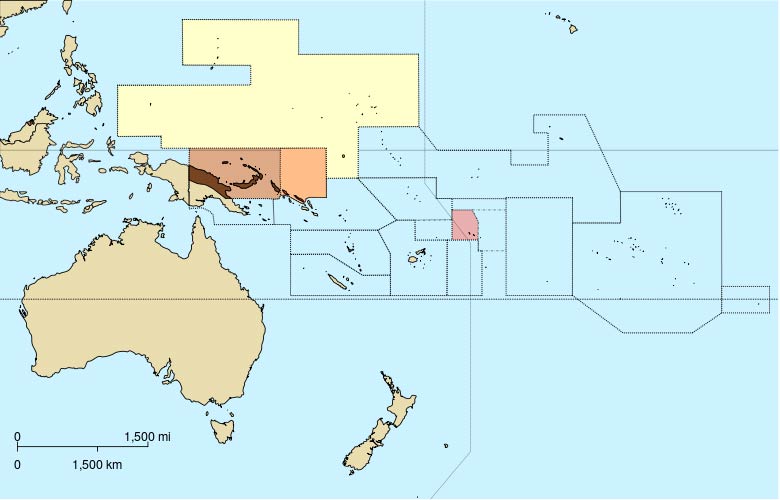 German New Guinea formed the first portion of the overseas possessions built up by the German Empire in the late 19th and early 20th century. It was operated as a German protectorate between 1884 and 1914, after which time it was taken over by Australian troops.
German New Guinea formed the first portion of the overseas possessions built up by the German Empire in the late 19th and early 20th century. It was operated as a German protectorate between 1884 and 1914, after which time it was taken over by Australian troops.
The colony covered northeastern New Guinea itself, which became known as Kaiser-Wilhelmsland after the then-German ruler, as well as a number of associated small islands. After World War One, Germany’s colonies were distributed among the victorious Allied powers, with New Guinea going to Australia.
Historical Overview
German trade interests in the New Guinea area increased rapidly during the middle of the 19th century, especially in the cobra industry. By the 1870s, Germany was by far the most important commercial player in the region, and conservative factions in Berlin had begun to push for New Guinea’s formal annexation by Germany.
Chancellor Bismarck was open to these requests, writing in 1882 that “colonies demand a fatherland” and in 1884, he signaled his intentions by bringing a number of African trading posts under German imperial protection. Later that year, he informed the Reichstag that German policy would henceforth be to grant charters to private interests.
The Fate of New Guinea
 Interests in Australia and, by extension, its colonial master Britain watched these events carefully, and a number of newspaper articles were published in which the strategic and commercial importance of New Guinea was emphasized.
Interests in Australia and, by extension, its colonial master Britain watched these events carefully, and a number of newspaper articles were published in which the strategic and commercial importance of New Guinea was emphasized.
A Sydney Morning Herald piece provoked a particularly strong reaction, with Sir Thomas McIlwraith, the Premier of Queensland, asking the Colonial Office in London to proceed with formal annexation. Despite his eagerness to proceed, little happened and McIlwraith unilaterally proclaimed Queensland’s annexation of New Guinea, although this was quickly overturned by London.
German Administration
After the announcement of New Guinea’s new status as a German protectorate, Albert Hahl of the Berlin Colonial Office became a figure of major importance in the colony’s affairs. For almost two decades until the outbreak of World War One, Hahl acted first as a judge and then as deputy governor, before becoming governor in his own right in 1902.
He tried to keep New Guinea’s indigenous people happy with measures such as appointing village chiefs and protecting natively-held land from alienation. His system was only patchily applied, but exports from the colony increased eightfold during his tenure as governor.
The Impact of Christian Missionaries
 Meanwhile, a substantial number of Christian missionaries visited the territory, largely from the Lutheran and Catholic Churches. With their superior resources, it was the latter that had a greater degree of success, despite strong resistance among indigenous people to many European norms and customs.
Meanwhile, a substantial number of Christian missionaries visited the territory, largely from the Lutheran and Catholic Churches. With their superior resources, it was the latter that had a greater degree of success, despite strong resistance among indigenous people to many European norms and customs.
Germany bought the bulk of the Marianas from Spain in 1899 for 25 million pesetas and added the Marshall Islands in 1906. However, it was soon embroiled in further controversy, as troops were sent to many areas to forcibly recruit laborers, a measure which caused frequent and sometimes violent protests.
Outbreak of World War One
After the outbreak of war, it was quickly realized that the territory could not easily be defended, given Allied command of the sea. After only limited resistance, Kaiser-Wilhelmsland fell to Australian forces. Only one significant battle took place, and that was at a wireless station on New Britain on September 11, 1914. Around 30 Germans were killed and ten wounded, but the Australians suffered only ten casualties in all.
By September 21, all troops defending the colony had surrendered to the invaders. Nevertheless, a small band led by Hermann Detzner remained at large throughout the war. The 1919 Treaty of Versailles stripped Germany of all its colonies, and New Guinea became an Australian-administered mandate of the League of Nations.